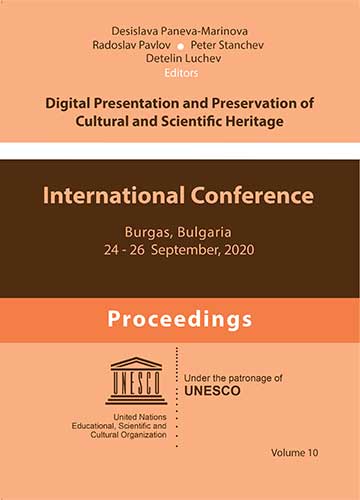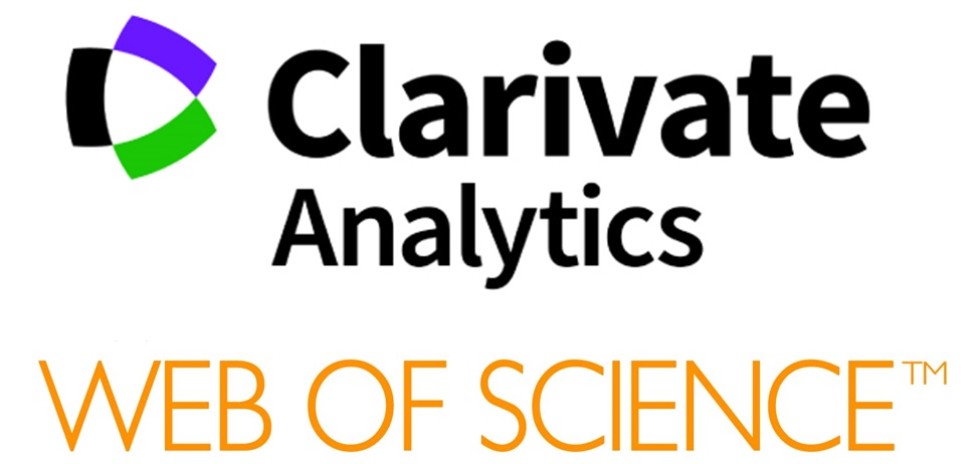Evaluating Cognitive and Emotional Engagement in AI-Assisted Virtual Reality Through EEG
DOI:
https://doi.org/10.55630/dipp.2025.15.7Keywords:
EEG, BCI, VR Systems, Cognitive Load, Emotional State Monitoring, Culturan HeritageAbstract
This study proposes an EEGbased evaluation pipeline for an AI assisted VR platform designed to deliver immersive cultural heritage experiences for elderly people. EEG data is used to evaluate emotional and cognitive responses while performing realworld versus virtual tasks, offering a reusable evaluation framework for future immersive heritage applications.References
Ajami, M. M., Rasti, J., & Yazdchi, M. (2024). Comparative analysis of mental workload in real vs. graphic virtual reality environments: Insights from EEG and subjective assessments. Journal of Cognitive Enhancement. [In press]
Albuquerque, I., & Almeida, T. (2012). Virtual art: A tendency in contemporary art. Proceedings of the Con-temp Art, 12, 65–70.
Attar, E. T. (2022). Review of electroencephalography signals approaches for mental stress assessment. Neurosciences Journal, 27 (4), 209 –215.
Belver, M. H., Ullán, A. M., Avila, N., Moreno, C., & Hernández, C. (2018). Art museums as a source of wellbeing for people with dementia: An experience in the Prado Museum. Arts & Health, 10 (3), 213 –226.
Biasiucci, A., Franceschiello, B., & Murray, M. M. (2019). Electroencephalography. Current Biology, 29 (3), R80 –R85.
Bradley, M. M., & Lang, P. J. (1994). Measuring emotion: The self -assessment manikin and the semantic differential. Journal of Behavior Therapy and Experimental Psychiatry, 25 (1), 49 –59.
Chen, Z., He, Y., & Yu, Y. (2020). Attention restoration during environmental exposure via alphatheta oscillations and synchronization. Journal of Environmental Psychology, 68, 101406.
Chiossi, F., Ou, C., Gerhardt, C., Putze, F., & Mayer, S. (2025). Designing and evaluating an adaptive virtual reality system using EEG frequencies to balance internal and external attention states. International Journal of Human-Computer Studies, 196, 103433.
Darfler, M., Cruz - Garza, J. G., & Kalantari, S. (2022). An EEG based investigation of the effect of perceived observation on visual memory in virtual environments. Brain Sciences, 12 (2), 269.
El Debuch, H., et al. (2024). The virtual museum: How technology and virtual reality may help protect and promote cultural heritage. In Heritage in war and peace: Legal and political perspectives for future protection (pp. 149 – 164). Springer International Publishing.
Eurostat. (2020, July). Ageing Europe – statistics on population developments. Statistics Explained. https://ec.europa.eu/eurostat/statisticsexplained/index.php?title=Ageing_Europe_- _statistics_on_population_developments
Gholizadeh HamlAbadi, K., Laamarti, F., & El Saddik, A. (2024). Meta -review on brain computer interface (BCI) in the metaverse. ACM Transactions on Multimedia Computing, Communications and Applications, 20 (12), 1 –42.
Gray, H. M., Ambady, N., Lowenthal, W. T., & Deldin, P. (2004). P300 as an index of attention to self-relevant stimuli. Journal of Experimental Social Psychology, 40 (2), 216–224.
Gu, X., Cao, Z., Jolfaei, A., Xu, P., Wu, D., Jung, T. P., & Lin, C. T. (2021). EEG based brain computer interfaces (BCIs): A survey of recent studies on signal sensing technologies and computational intelligence approaches and their applications. IEEE/ACM Transactions on Computational Biology and Bioinformatics, 18 (5), 1645–1666.
Hamann, A., & Carstengerdes, N. (2022). Investigating mental workload -induced changes in cortical oxygenation and frontal theta activity during simulated flights. Scientific Reports, 12 (1), 6449.
Hart, S. G., & Staveland, L. E. (1988). Development of NASA - TLX (Task Load Index): Results of empirical and theoretical research. In Advances in psychology (Vol. 52, pp. 139– 183). North -Holland.
Harmon- Jones, E., Gable, P. A., & Peterson, C. K. (2010). The role of asymmetric frontal cortical activity in emotion-related phenomena: A review and update. Biological Psychology, 84 (3), 451 –462.
Kober, S. E., Settgast, V., Brunnhofer, M., Augsdörfer, U., & Wood, G. (2022). Move your virtual body: Differences and similarities in brain activation patterns during hand movements in real world and virtual reality. Virtual Reality, 26 (2), 501 –511.
Kourtesis, P. (2024). A comprehensive review of multimodal XR applications, risks, and ethical challenges in the metaverse. Multimodal Technologies and Interaction, (11), 98.
Kutas, M., & Federmeier, K. D. (2011). Thirty years and counting: Finding meaning in the N400 component of the eventrelated brain potential (ERP). Annual Review of Psychology, 62 (1), 621 –647.
Nwagu, C., AlSlaity, A., & Orji, R. (2023). EEG based brain -computer interactions in immersive virtual and augmented reality: A systematic review. Proceedings of the ACM on Human-Computer Interaction, 7 (EICS), 1 –33.
Petukhov, I. V., Glazyrin, A. E., Gorokhov, A. V., Steshina, L. A., & Tanryverdiev, I. O. (2020). Being present in a real or virtual world: An EEG study. International Journal of Medical Informatics, 136, 103977.
Porssut, T., Iwane, F., Chavarriaga, R., Blanke, O., Millán, J. D. R., Boulic, R., & Herbelin, B. (2023). EEG signature of breaks in embodiment in VR. PLoS One, (5), e0282967.
Sabio, J., Williams, N. S., McArthur, G. M., & Badcock, N. A. (2024). A scoping review on the use of consumer-grade EEG devices for research. PLoS One, 19 (3), e0291186.
Shou, G., & Ding, L. (2013, July). Frontal theta EEG dynamics in a real -world air traffic control task. In 2013 35th Annual International Conference of the IEEE Engineering in Medicine and Biology Society (EMBC) (pp. 5594 – 5597). IEEE.
Spampinato, F. M. (2021). Contemporary art and virtual reality: New conditions of viewership. Cinergie–Il Cinema e le Altre Arti, 19, 121–133.
Sun, G., Li, K., Li, X., Zhang, B., Yuan, S., & Wu, G. (2009, December). A general framework of brain computer interface with visualization and virtual reality feedback. In 2009 Eighth IEEE International Conference on Dependable, Autonomic and Secure Computing (pp. 418 – 423). IEEE.
Tremmel, C., Herff, C., Sato, T., Rechowicz, K., Yamani, Y., & Krusienski, D. J. (2019). Estimating cognitive workload in an interactive virtual reality environment using EEG. Frontiers in Human Neuroscience, 13, 401.
Zander, T. O., & Kothe, C. (2011). Towards passive brain –computer interfaces: Applying brain –computer interface technology to human–machine systems in general. Journal of Neural Engineering, 8 (2), 025005.
Downloads
Published
How to Cite
Issue
Section
License
Copyright (c) 2025 Digital Presentation and Preservation of Cultural and Scientific Heritage

This work is licensed under a Creative Commons Attribution-NonCommercial 4.0 International License.



